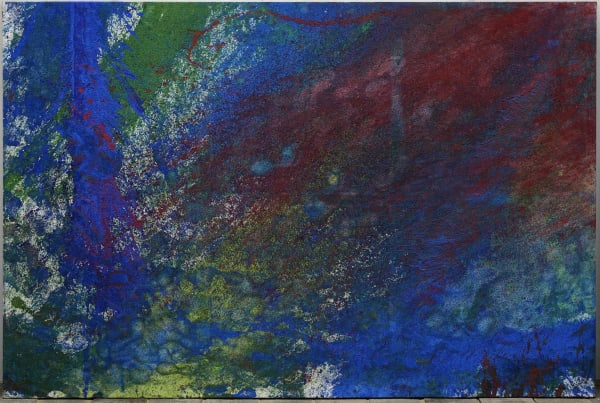Hermann Nitsch
Born in Vienna, Nitsch trained at the Wiener Graphische Lehr- und Versuchanstalt. Influenced by religious art, existential philosophy, and psychoanalysis, he began staging visceral performance actions in the early 1960s, incorporating animal carcasses, blood, and sacrificial imagery to confront taboos surrounding violence, death, and ecstasy. These Aktionen aimed to provoke catharsis and reflection on repressed aspects of human experience, often drawing criticism for their intensity and spiritual overtones.
His work—both celebrated and controversial—merged body art, ritual theatre, and abstract expressionism. In parallel to his performances, Nitsch produced bold, gestural paintings born from his actions, and composed experimental scores tied to his theatrical concepts.
Over the decades, he presented nearly 150 actions, including the monumental 6-Day Play at Schloss Prinzendorf, his long-time base in Lower Austria. He also engaged with opera, designing productions for works by Massenet, Glass, Stravinsky, and Messiaen. Major retrospectives were held at institutions including the Albertina (Vienna), Martin-Gropius-Bau (Berlin), and the Essl Museum.
Nitsch’s legacy is preserved in dedicated museums in Mistelbach and Naples, as well as the Nitsch Foundation in Vienna. His estate is represented by Pace Gallery and Galerie Kandlhofer.
He passed away in 2022 at the age of 83.





